Retinoblastoma Treatment Market Size
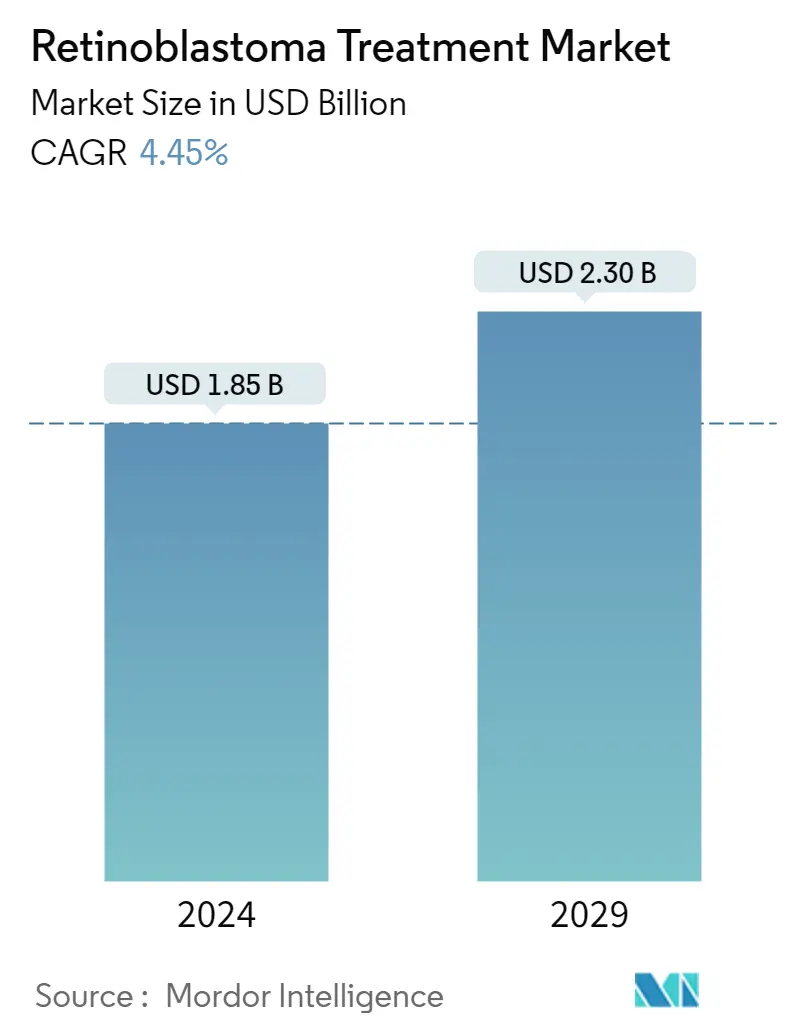
| Study Period | 2019 - 2029 |
| Market Size (2024) | USD 1.85 Billion |
| Market Size (2029) | USD 2.30 Billion |
| CAGR (2024 - 2029) | 4.45 % |
| Fastest Growing Market | Asia-Pacific |
| Largest Market | North America |
Major Players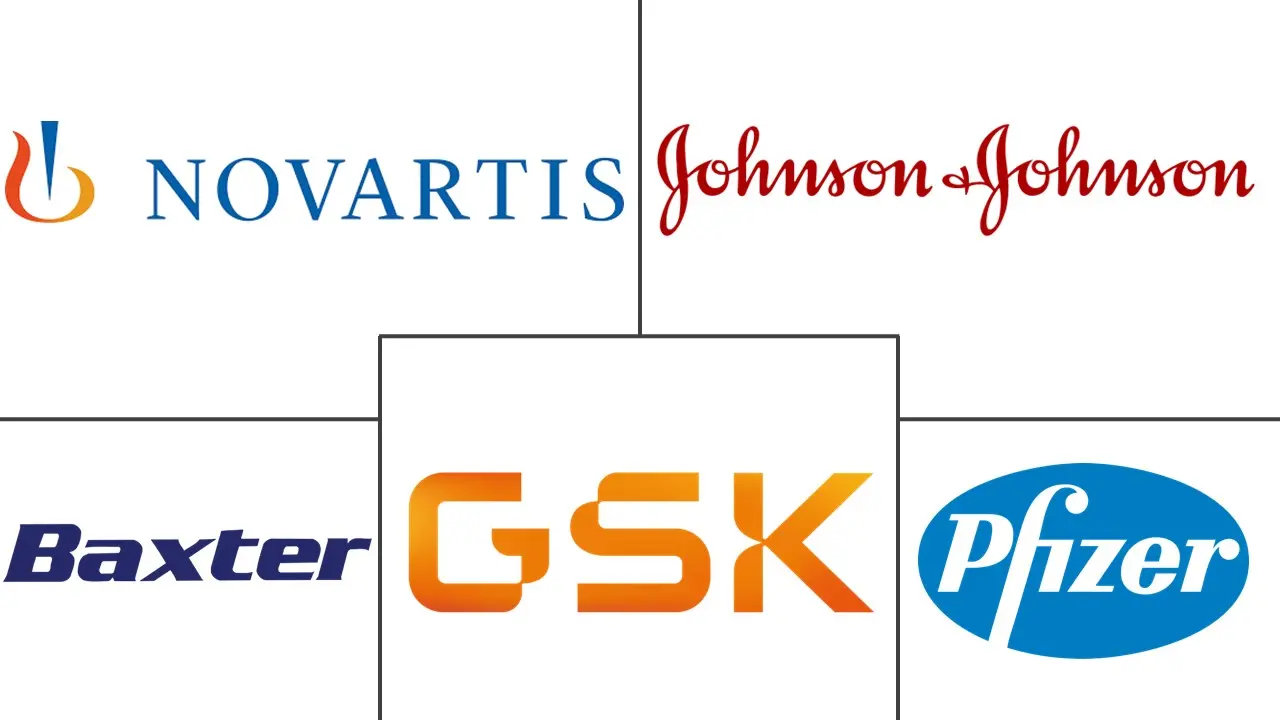
*Disclaimer: Major Players sorted in no particular order |
Retinoblastoma Treatment Market Analysis
The Retinoblastoma Treatment Market size is estimated at USD 1.85 billion in 2024, and is expected to reach USD 2.30 billion by 2029, growing at a CAGR of 4.45% during the forecast period (2024-2029).
The COVID-19 pandemic created a significant void in the availability and accessibility of treatment modalities and timely intervention for children with eye cancer. For instance, according to an article published by the Indian Journal of Ophthalmology, in September 2021, the COVID-19-related nationwide lockdown deprived retinoblastoma patients of optimal and timely management, leading to prolonged treatment interruptions. Thus, COVID-19 had an impact on the retinoblastoma treatment market. However, with the decreasing number of COVID-19 cases, the demand for ophthalmic treatment and surgeries increased. For instance, according to an article published by the American Academy of Ophthalmology in November 2021, patients began pouring in with advanced eye cancers in October 2021, and there was an alarming rise in patients that required enucleation. Further, according to the same source, more young children with advanced cases of retinoblastoma were observed in the hospitals in Philadelphia. Hence, with the declining COVID-19 cases, there was an increase in retinoblastoma treatments, thereby fueling market growth, and the same is expected over the forecast period.
Certain factors driving the market growth include remission and the chance of recurrence of retinoblastoma and increasing public awareness of retinoblastoma. For instance, according to an article published by Bone Report, in December 2021, recurrence of retinoblastoma usually occurs within the first few years after treatment. Despite complete tumor regression, delayed relapse of retinoblastoma can occur, predisposing patients to osteosarcoma as a second malignancy. Furthermore, according to an article published by the National Library of Medicine in June 2021, Kaplan-Meier's estimate of tumor recurrence at six months, one year, three years, and five years was 20%, 31%, 68%, and 73%, respectively in 2021. Thus, the remission and the chance of recurrence of retinoblastoma are expected to boost market growth.
Furthermore, every year, to raise awareness, the 2nd week of May is observed as "World Retinoblastoma Awareness Week" around the World. It is an opportunity to raise global awareness of retinoblastoma, a life-threatening eye cancer that is almost exclusively found in young children every year. Hence, rising awareness regarding diseases is projected to boost market growth over the forecast period.
However, the side effects of retinoblastoma surgery and the high cost of treatment in developing countries are likely to hinder market growth over the forecast period.
Retinoblastoma Treatment Market Trends
This section covers the major market trends shaping the Retinoblastoma Treatment Market according to our research experts:
Non-hereditary Retinoblastoma is Expected to hold a Significant Market Share Over the Forecast Period
In the non-hereditary form of retinoblastoma, typically, only one eye is affected, and there is no family history of the disease. Affected individuals are born with two normal copies of the RB1 gene. An increase in cases of non-hereditary retinoblastoma is expected to drive the market's growth. For instance, according to an article published by Frontiers Media S.A., in November 2022, the incidence of retinoblastoma is approximately 1 in 17,000 live births, with about 8,000 new cases diagnosed each year worldwide where the non-inherited sporadic type accounts for 60-70%. Additionally, according to an article published by the National Library of Medicine, in August 2022, 95% of retinoblastoma cases are sporadic.
Additionally, unilateral retinoblastomas comprise all non-hereditary retinoblastoma. According to an article published by Dove Press Ltd in January 2021, intra-arterial chemotherapy has recently gained wide acceptance in treating unilateral retinoblastoma and reported salvage rates from 66.6-100%. There is an increase in unilateral retinoblastoma cases leading to an increase in demand for its treatment which is expected to drive segmental growth.
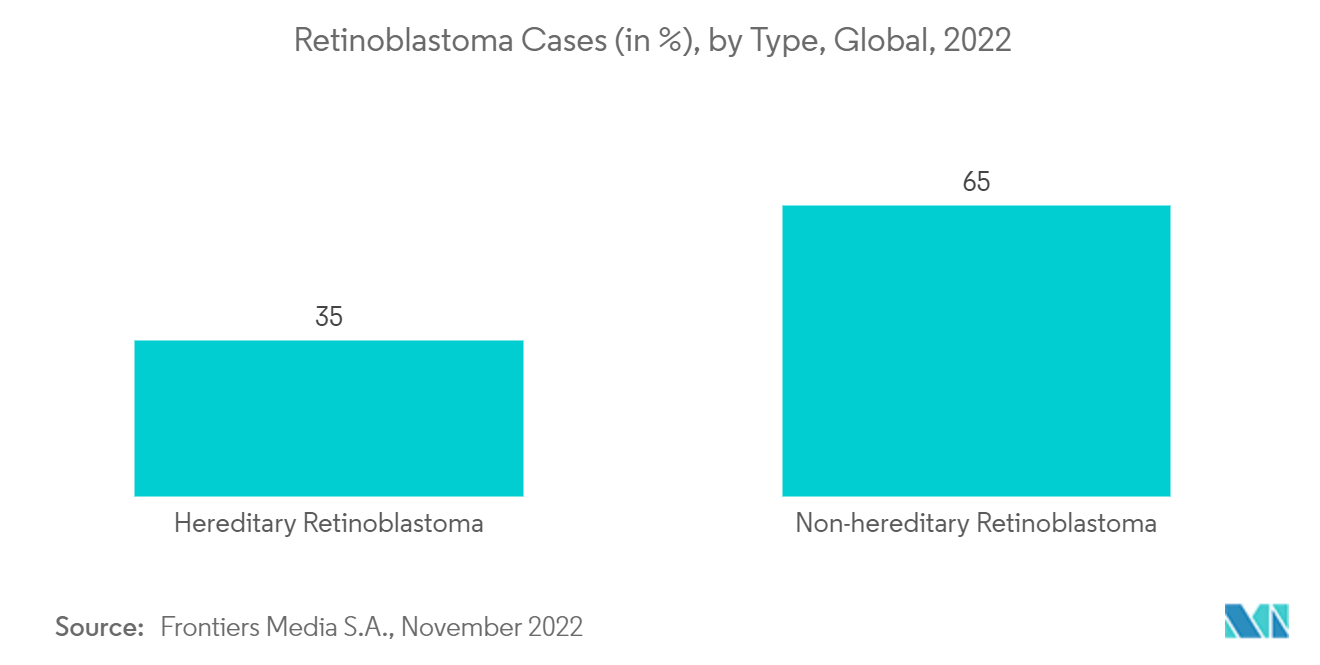
North America is Expected to hold a Significant Market Share Over the Forecast Period
North America accounts for a significant market share of retinoblastoma treatment and is expected to continue its stronghold over the forecast period. This region is expected to increase its market share in the future because retinoblastoma (Rb) is the most common primary intraocular malignancy of infancy and childhood, and seriously endangers the vision and life of children.
According to an article published by the American Society of Clinical Oncology, in February 2022, retinoblastoma makes up 2% of all cancers diagnosed in children before age 15. An estimated 200 to 300 children in the United States are diagnosed with retinoblastoma each year.
Furthermore, an increase in regulatory approval for cancer treatment in the region is expected to drive the market's growth over the forecast period. For instance, in September 2022, children's hospital Los Angeles identified molecular markers to increase precision in the treatment of retinoblastoma. Such development is expected to drive market growth over the forecast period.
Therefore, the factors mentioned above are expected to drive market growth in the region during the forecast period.
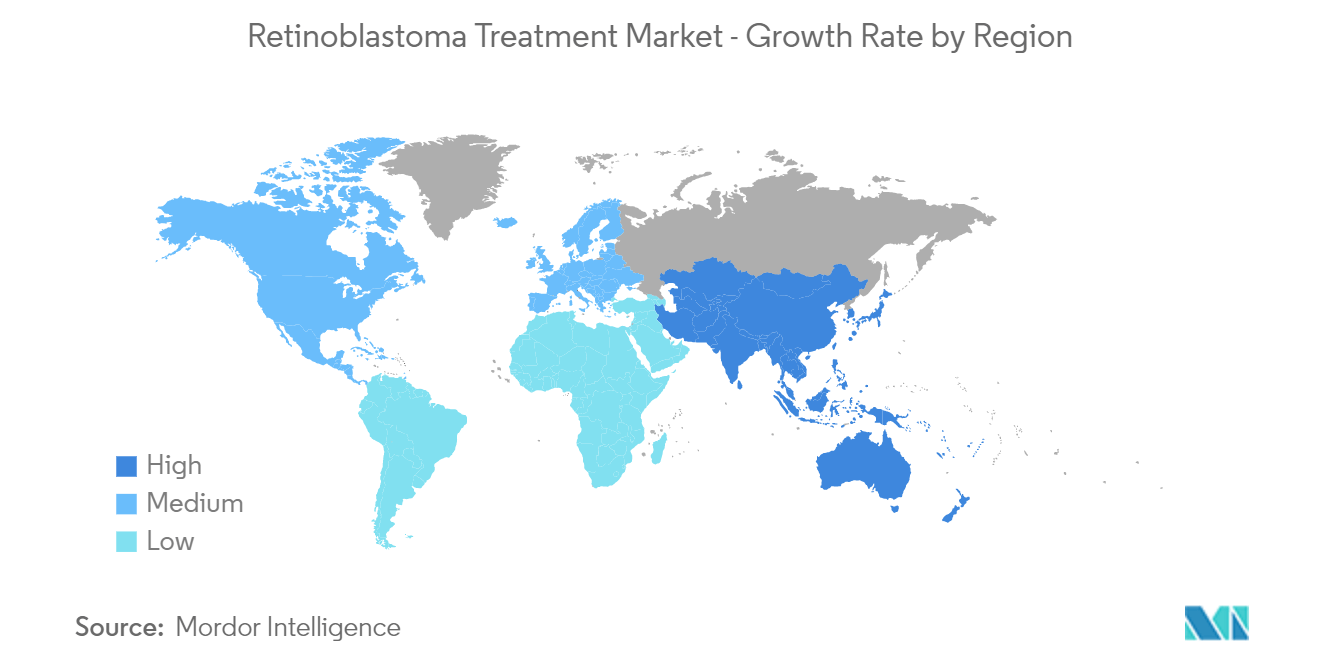
Retinoblastoma Treatment Industry Overview
The retinoblastoma treatment market is moderately competitive in nature due to the presence of companies operating globally as well as regionally. The competitive landscape includes an analysis of a few international and local companies that hold market shares and are well known, including Baxter International, Inc., GlaxoSmithKline PLC, Pfizer, Inc., Johnson & Johnson, and Novartis AG among others.
Retinoblastoma Treatment Market Leaders
-
Baxter International, Inc.
-
GlaxoSmithKline PLC
-
Pfizer, Inc.
-
Johnson & Johnson
-
Novartis AG
*Disclaimer: Major Players sorted in no particular order
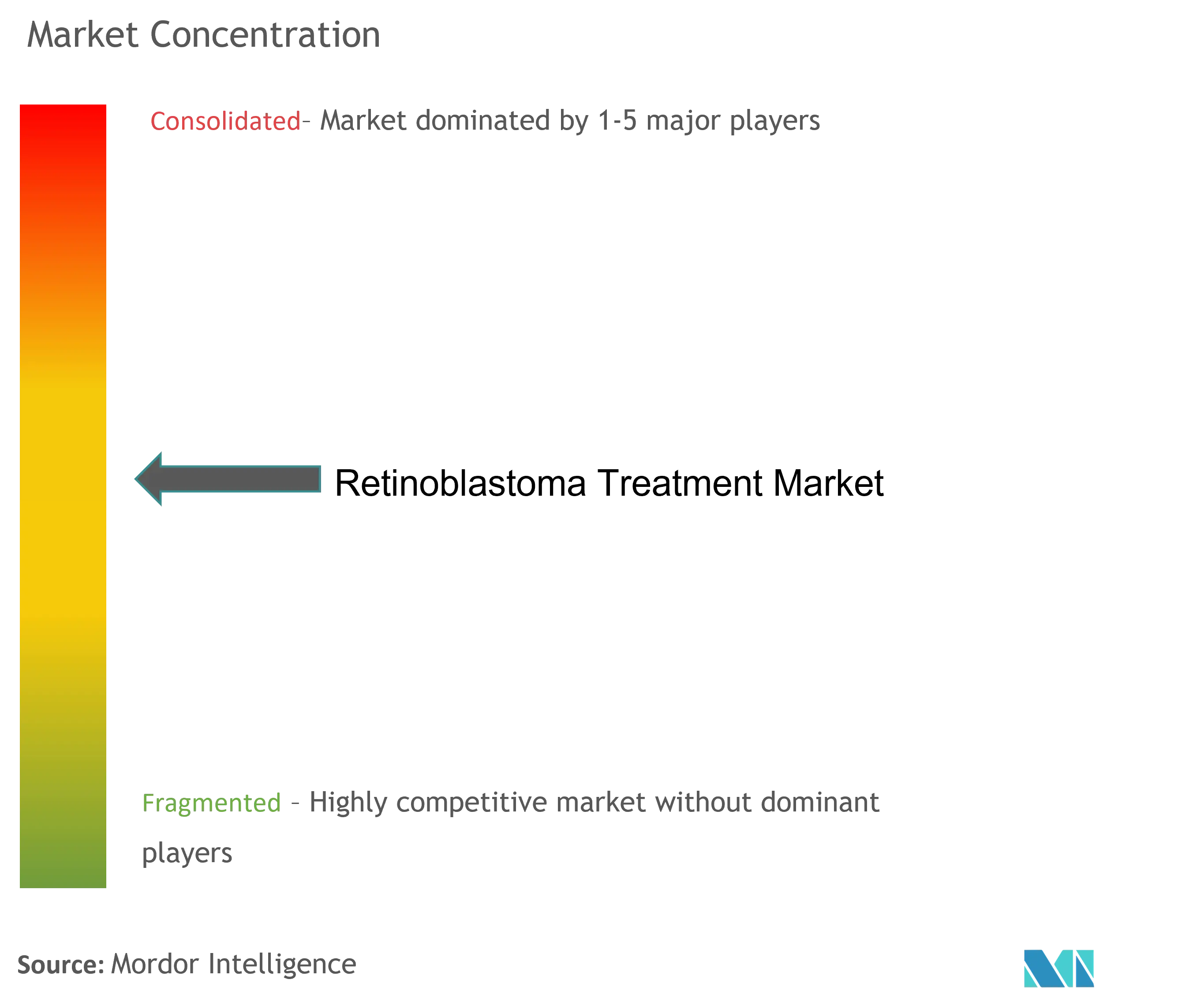
Retinoblastoma Treatment Market News
- September 2022: researchers at UT Southwestern and the University of Miami discovered a molecule, estrogen-related receptor gamma, or ESRRG that is hyperactive and promotes tumor cell survival in retinoblastoma. Blocking ESRRG, the team reported in Science Advances, kills retinoblastoma cells.
- May 2022: the UK's National Health Service launched a new test to detect a rare form of eye cancer, called retinoblastoma, in unborn babies. This test will allow treatment to be started as soon as the baby is born and may help to save their eyesight.
Retinoblastoma Treatment Market Report - Table of Contents
1. INTRODUCTION
- 1.1 Study Assumptions and Market Definition
- 1.2 Scope of the Study
2. RESEARCH METHODOLOGY
3. EXECUTIVE SUMMARY
4. MARKET DYNAMICS
- 4.1 Market Overview
-
4.2 Market Drivers
- 4.2.1 Remission and the Chance of Recurrence of Retinoblastoma
- 4.2.2 Increasing Public Awareness on Retinoblastoma
-
4.3 Market Restraints
- 4.3.1 Side Effects of Retinoblastoma Surgery and High Cost of Treatment in Developing Countries
-
4.4 Porter's Five Forces Analysis
- 4.4.1 Threat of New Entrants
- 4.4.2 Bargaining Power of Buyers/Consumers
- 4.4.3 Bargaining Power of Suppliers
- 4.4.4 Threat of Substitute Products
- 4.4.5 Intensity of Competitive Rivalry
5. MARKET SEGMENTATION (Market Size by Value - USD Million)
-
5.1 By Treatment Type
- 5.1.1 Surgery
- 5.1.2 Radiation therapy
- 5.1.3 Laser Therapy
- 5.1.4 Cryotherapy
- 5.1.5 Chemotherapy
- 5.1.6 Bone Marrow Transplantation/Stem Cell Transplant
-
5.2 By Type of Retinoblastoma
- 5.2.1 Non-hereditary Retinoblastoma
- 5.2.2 Hereditary Retinoblastoma
-
5.3 By Type of Staging
- 5.3.1 Intraocular Retinoblastoma
- 5.3.2 Extraocular Retinoblastoma
-
5.4 Geography
- 5.4.1 North America
- 5.4.1.1 United States
- 5.4.1.2 Canada
- 5.4.1.3 Mexico
- 5.4.2 Europe
- 5.4.2.1 Germany
- 5.4.2.2 United Kingdom
- 5.4.2.3 France
- 5.4.2.4 Italy
- 5.4.2.5 Spain
- 5.4.2.6 Rest of Europe
- 5.4.3 Asia-Pacific
- 5.4.3.1 China
- 5.4.3.2 Japan
- 5.4.3.3 India
- 5.4.3.4 Australia
- 5.4.3.5 South Korea
- 5.4.3.6 Rest of Asia-Pacific
- 5.4.4 Middle East and Africa
- 5.4.4.1 GCC
- 5.4.4.2 South Africa
- 5.4.4.3 Rest of Middle East and Africa
- 5.4.5 South America
- 5.4.5.1 Brazil
- 5.4.5.2 Argentina
- 5.4.5.3 Rest of South America
6. COMPETITIVE LANDSCAPE
-
6.1 Company Profiles
- 6.1.1 Baxter International Inc.
- 6.1.2 Bristol-Myers Squibb Company
- 6.1.3 Cadila Pharmaceuticals
- 6.1.4 GlaxoSmithKline plc
- 6.1.5 Johnson & Johnson
- 6.1.6 Merck & Co.
- 6.1.7 Novartis AG
- 6.1.8 Pfizer Inc.
- 6.1.9 Teva Pharmaceutical Industries Ltd.
- 6.1.10 Cellceutix Corporation
- 6.1.11 Icon Bioscience
- 6.1.12 RXi Pharmaceuticals
- *List Not Exhaustive
7. MARKET OPPORTUNITIES AND FUTURE TRENDS
** Subject To AvailablityRetinoblastoma Treatment Industry Segmentation
As per the scope of the report, Retinoblastoma is a rare type of eye cancer that usually develops in early childhood, typically before the age of 5. The most common symptom of retinoblastoma is a visible whiteness in the pupil, called a cat's eye reflex or leukocoria.
The Retinoblastoma Treatment Market is Segmented by Treatment Type (Surgery, Radiation therapy, Laser therapy, Cryotherapy, Chemotherapy, and Bone Marrow Transplantation/Stem Cell Transplant), Type of Retinoblastoma (Non-hereditary Retinoblastoma, and Hereditary Retinoblastoma), Type of Staging (Intraocular Retinoblastoma, and Extraocular Retinoblastoma), and Geography (North America, Europe, Asia-Pacific, Middle East and Africa, and South America). The market report also covers the estimated market sizes and trends for 17 countries across major regions globally. The report offers the value (USD million) for the above segments.
| By Treatment Type | Surgery | |
| Radiation therapy | ||
| Laser Therapy | ||
| Cryotherapy | ||
| Chemotherapy | ||
| Bone Marrow Transplantation/Stem Cell Transplant | ||
| By Type of Retinoblastoma | Non-hereditary Retinoblastoma | |
| Hereditary Retinoblastoma | ||
| By Type of Staging | Intraocular Retinoblastoma | |
| Extraocular Retinoblastoma | ||
| Geography | North America | United States |
| Canada | ||
| Mexico | ||
| Geography | Europe | Germany |
| United Kingdom | ||
| France | ||
| Italy | ||
| Spain | ||
| Rest of Europe | ||
| Geography | Asia-Pacific | China |
| Japan | ||
| India | ||
| Australia | ||
| South Korea | ||
| Rest of Asia-Pacific | ||
| Geography | Middle East and Africa | GCC |
| South Africa | ||
| Rest of Middle East and Africa | ||
| Geography | South America | Brazil |
| Argentina | ||
| Rest of South America |
Retinoblastoma Treatment Market Research FAQs
How big is the Retinoblastoma Treatment Market?
The Retinoblastoma Treatment Market size is expected to reach USD 1.85 billion in 2024 and grow at a CAGR of 4.45% to reach USD 2.30 billion by 2029.
What is the current Retinoblastoma Treatment Market size?
In 2024, the Retinoblastoma Treatment Market size is expected to reach USD 1.85 billion.
Who are the key players in Retinoblastoma Treatment Market?
Baxter International, Inc., GlaxoSmithKline PLC, Pfizer, Inc., Johnson & Johnson and Novartis AG are the major companies operating in the Retinoblastoma Treatment Market.
Which is the fastest growing region in Retinoblastoma Treatment Market?
Asia-Pacific is estimated to grow at the highest CAGR over the forecast period (2024-2029).
Which region has the biggest share in Retinoblastoma Treatment Market?
In 2024, the North America accounts for the largest market share in Retinoblastoma Treatment Market.
What years does this Retinoblastoma Treatment Market cover, and what was the market size in 2023?
In 2023, the Retinoblastoma Treatment Market size was estimated at USD 1.77 billion. The report covers the Retinoblastoma Treatment Market historical market size for years: 2019, 2020, 2021, 2022 and 2023. The report also forecasts the Retinoblastoma Treatment Market size for years: 2024, 2025, 2026, 2027, 2028 and 2029.
Eye Cancer Treatment Industry Report
Statistics for the 2024 Eye Cancer Treatment market share, size and revenue growth rate, created by Mordor Intelligence™ Industry Reports. Eye Cancer Treatment analysis includes a market forecast outlook to 2029 and historical overview. Get a sample of this industry analysis as a free report PDF download.



